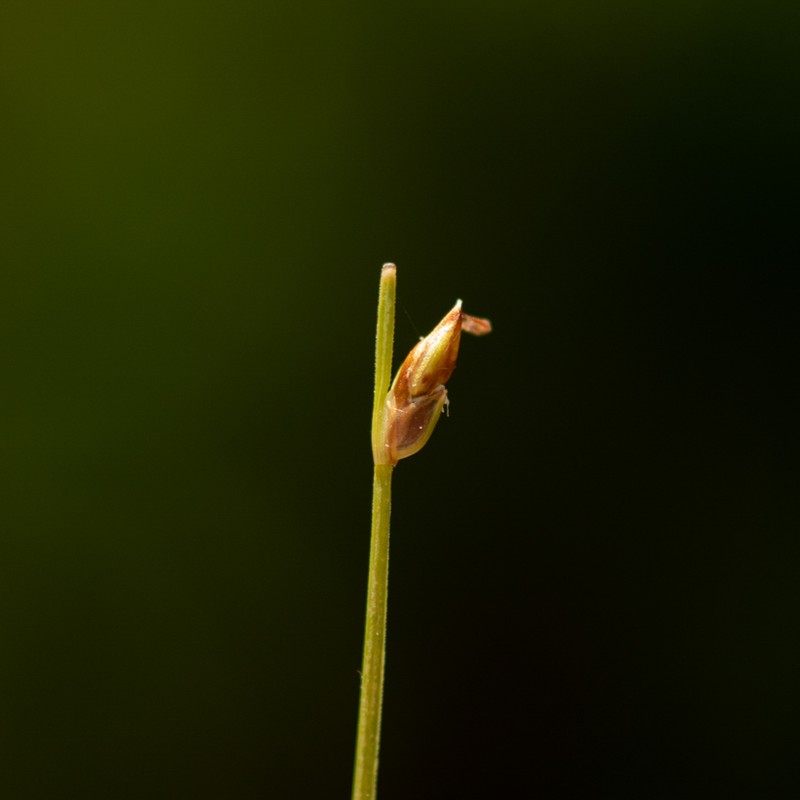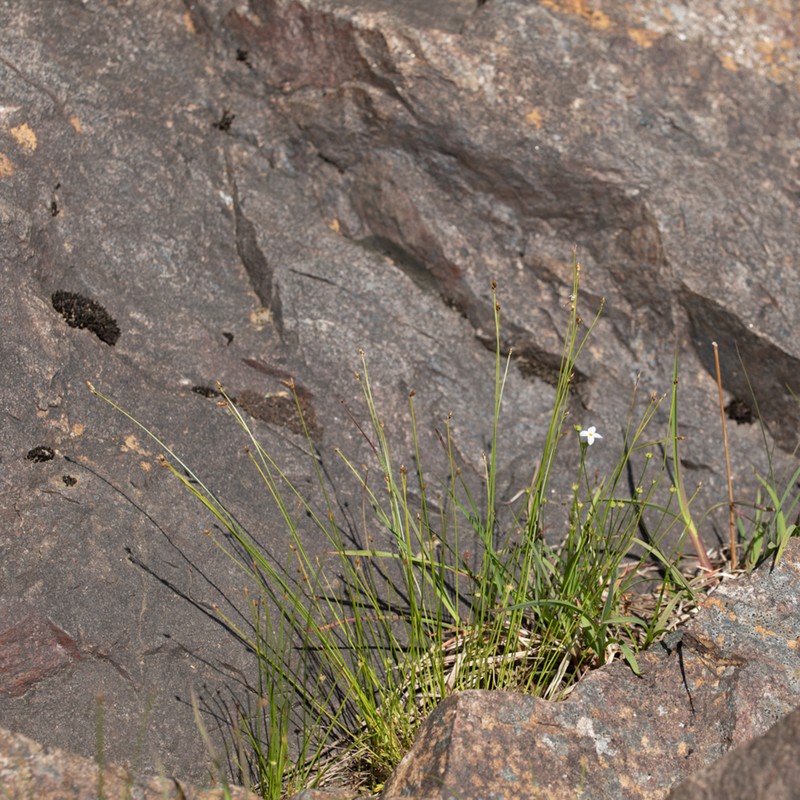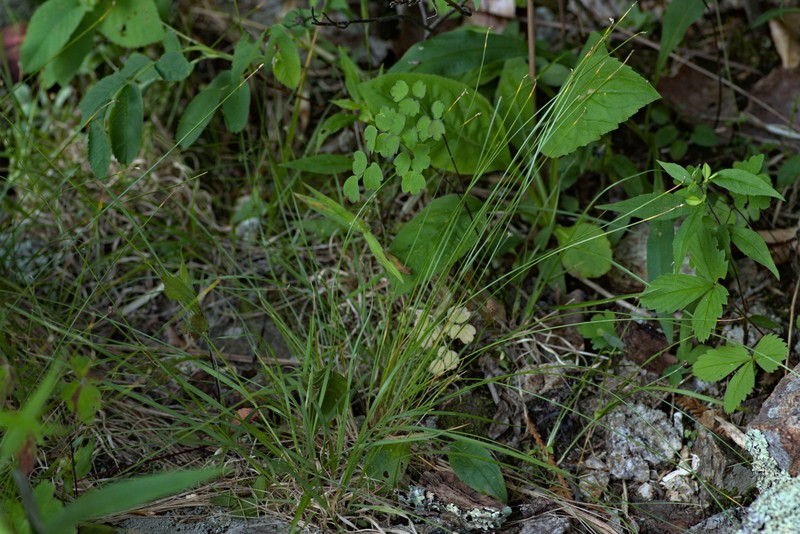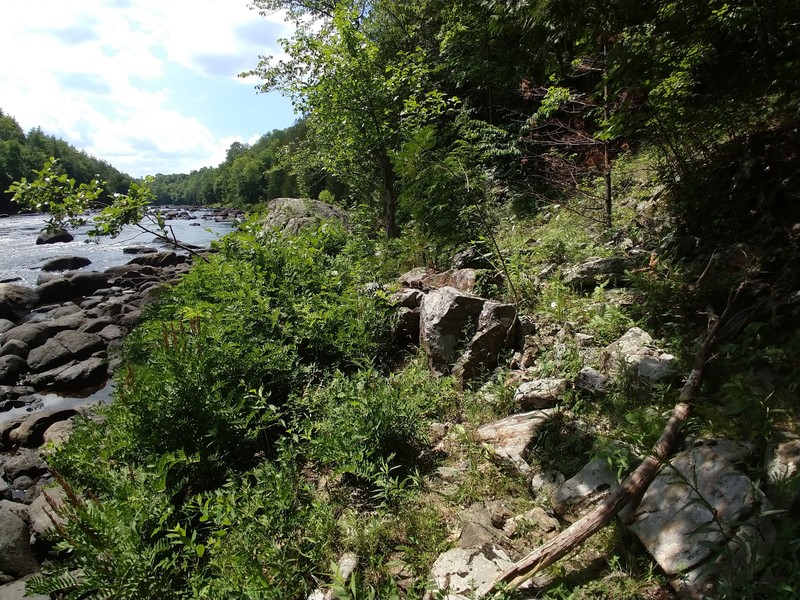Clinton's Club Sedge
Trichophorum clintonii (Gray) S.G. Sm.
- Class
- Monocotyledoneae (Monocots)
- Family
- Cyperaceae (Sedge Family)
- State Protection
- Endangered
Listed as Endangered by New York State: in imminent danger of extirpation in New York. For animals, taking, importation, transportation, or possession is prohibited, except under license or permit. For plants, removal or damage without the consent of the landowner is prohibited.
- Federal Protection
- Not Listed
- State Conservation Status Rank
- S1
Critically Imperiled in New York - Especially vulnerable to disappearing from New York due to extreme rarity or other factors; typically 5 or fewer populations or locations in New York, very few individuals, very restricted range, very few remaining acres (or miles of stream), and/or very steep declines.
- Global Conservation Status Rank
- G4
Apparently Secure globally - Uncommon in the world but not rare; usually widespread, but may be rare in some parts of its range; possibly some cause for long-term concern due to declines or other factors.
Summary
Did you know?
New Yorkers should be proud. This plant is named after George William Clinton (1807-1885), son of Governor DeWitt Clinton, and outstanding citizen of Buffalo where he helped organize the Buffalo Society of Natural Sciences and was the first president of the Buffalo Museum of Natural Sciences. He was an amateur botanist and the Clinton herbarium in Buffalo is named after him. He died while walking through the Albany Rural Cemetery, still clutching a clover in his hands (Wikipedia contributors).
State Ranking Justification
There is one verified occurrence, 4 historical occurrences, 1 occurrence destroyed.
Short-term Trends
The only population known to be extant occurs in a dynamic habitat. Surveys of this population have fluctuated in space and time with counts ranging from 12 to 300 individuals. Without consistent area surveys the population trend is uncertain but the species has persisted at the site for over 50 years, suggesting some level of stability.
Long-term Trends
The long term trend is a decline as only one extant site is known. Of the three remaining historically known sites, one has been extirpated by development and another was not relocated during a survey in the 1950's and may be lost. The other historically known population has not been resurveyed so its status is unknown.
Conservation and Management
Threats
An infestation of this species' shore and riverside gravel bar habitat by invasive exotic plant species could potentially threaten the only known extant population
Conservation Strategies and Management Practices
Reinventory the extant site every 10 years and document and control any invasive species that invade Trichorphorum clintonii's gravel bar habitat.
Habitat
Habitat
In New York, more recently this taxon has been found in the Adirondacks in a riverside ice meadow and cobble shore, and in crevices in metamorphic rock at a rocky inlet. There are disjunct historical records from far western and northern New York but they lack specific habitat descriptions (New York Natural Heritage Program 2015). Calcareous river shore outcrops (Go Botany 2015). Dry or springy argillaceous or slaty ledges, gravel or open woods and turfy shores (Fernald 1950). Open, dry to mesic prairies, meadows, riverbanks, rock crops, on lime-rich substrates (FNA 2002).
Associated Ecological Communities
- Calcareous shoreline outcrop*
(guide)
A community that occurs along the shores of lakes and streams on outcrops of calcareous rocks such as limestone and dolomite. The vegetation is sparse; most plants are rooted in rock crevices.
- Cobble shore
(guide)
A community that occurs on the well-drained cobble shores of lakes and streams. These shores are usually associated with high-energy waters (such as high-gradient streams), and they are likely to be scoured by floods or winter ice floes.
- Riverside ice meadow
(guide)
A meadow community that occurs on gently sloping cobble shores and rock outcrops along large rivers in areas where winter ice floes are pushed up onto the shore, forming an ice pack that remains until late spring. The ice scours the meadow, cutting back woody plants.
* probable association but not confirmed.
Associated Species
- Andropogon gerardii
- carex cryptolepis
- Carex flava (yellow sedge)
- Carex interior (inland sedge)
- Carex lenticularis (lake shore sedge)
- Carex viridula
- Cladium mariscoides (twig-rush)
- Deschampsia cespitosa (tufted hair grass)
- Doellingeria umbellata var. umbellata (tall flat-topped white-aster)
- Drosera intermedia (spatulate-leaved sundew)
- Eleocharis tenuis
- Eriocaulon parkeri (estuary pipewort, Parker's pipewort, estuary hat-pins)
- Houstonia caerulea (common bluets, Quaker-ladies)
- Juncus articulatus (jointed rush)
- Juncus marginatus (common grass-leaved rush)
- Juncus pelocarpus (brown-fruited rush)
- Myrica gale (sweet gale)
- Osmunda regalis
- Panicum rigidulum
- Pogonia ophioglossoides (rose pogonia)
- Rhynchospora capitellata (brownish beak sedge)
- Sanguisorba canadensis (Canadian burnet)
- Scirpus cyperinus (common wool-grass)
- Sisyrinchium montanum (mountain blue-eyed-grass)
- Symphyotrichum novi-belgii var. novi-belgii (common New York-aster)
- Symphyotrichum tradescantii (Tradescant's-aster)
- Thelypteris palustris
- Triadenum fraseri
- Triantha glutinosa (sticky false asphodel)
- Utricularia cornuta (horned bladderwort)
- Vaccinium macrocarpon (cranberry)
- Viola lanceolata (lance-leaved violet)
- Xyris torta (slender yellow-eyed-grass)
Range
New York State Distribution
This species is has been found in the Adirondacks and western New York. It is at southern edge of its range in the state.
Global Distribution
Trichorum clintonii is a northern species that ranges from central Alberta to west-central Saskatchewan to Quebec and souh and east from Minnesota to New York, Maine and New Brunswick. This species is not documented from Vermont or New Hampshire. It is rare throughout its entire range.
Identification Comments
Identifying Characteristics
Trichophorum clintonii is a grass-like plant at grows in short, dense clumps (cespitose) up to 36 cm tall. Its stems are triangular (trigonous) and become rough (scabrous) closest to the inflorescence. The leaves (6-) 15-250 mm long and 0.5-0.8 (-1) mm wide, are equal in length or shorter than the stems at flowering, The inflorescences are solitary terminal spikelets subtended by a distinctly separate, enlarged scale. Spikelets are 3-6 flowered and 3.4 to 5.3 mm long by 1.3 to 2.55 mm wide, with sharp tipped or awned bracts 3 to 6mm long, the awns are up to 1.4 mm. The fruits (achenes) have a compressed triangular (trigonous) shape.
Best Life Stage for Proper Identification
This species is easiest to identify when it is in fruit. Specimens should include intact, mature fruits and full stems including leaves.
Similar Species
Three other Trichophorum species occur in New York. The triangular stem (in cross section) of T. clintonii separates distinguishes it from the very similar T. cespitosum, which has a round stem. Also closely related to T. alpinum, it can be distinguished by the number of flowers per spike fewer than 10 vs. typically 15 or more for T. alpinum, and its pale brown vs. white perianth bristles, that are shorter than or merely equal the fruit (achene) length instead of greatly exceeding it (20x). T. planifolium is distinguished by the nearly universal abrupt short, sharply pointed scales with a midrib extending beyond the tip, which contrast with the blunt scales of T. clintonii with midribs that do not reach the tip. The genus Trichophorum resembles the spike rushes (Eleocharis spp.) but can be definitely distinguished by the lack of a distinct enlarged appendage or "bump" (tuberacle) at the top of each fruit (achene).
Best Time to See
Trichophorum clintonii typically begins flowering in early May with fruiting in mid to late May with fruits persisting until late August.
- Flowering
- Fruiting
The time of year you would expect to find Clinton's Club Sedge flowering and fruiting in New York.
Clinton's Club Sedge Images
Taxonomy
Clinton's Club Sedge
Trichophorum clintonii (Gray) S.G. Sm.
- Kingdom Plantae
- Phylum Anthophyta
- Class Monocotyledoneae
(Monocots)
- Order Cyperales
- Family Cyperaceae (Sedge Family)
- Order Cyperales
- Class Monocotyledoneae
(Monocots)
- Phylum Anthophyta
Synonyms
- Scirpus clintonii Gray
Additional Resources
Best Identification Reference
Crins, W.J. 2002. Trichophorum Persoon. Pages 28-31 in Flora of North America Editorial Committee (Editors), Flora of North America, North of Mexico, Volume 23, Magnoliophyta: Commelinidae (in part): Cyperaceae. Oxford University Press, New York, NY, USA. 608pp + xxiv.
Other References
Gleason, Henry A. and A. Cronquist. 1991. Manual of Vascular Plants of Northeastern United States and Adjacent Canada. The New York Botanical Garden, Bronx, New York. 910 pp.
Holmgren, Noel. 1998. The Illustrated Companion to Gleason and Cronquist's Manual. Illustrations of the Vascular Plants of Northeastern United States and Adjacent Canada. The New York Botanical Garden, Bronx, New York.
New York Natural Heritage Program. 2024. New York Natural Heritage Program Databases. Albany, NY.
Weldy, T. and D. Werier. 2010. New York flora atlas. [S.M. Landry, K.N. Campbell, and L.D. Mabe (original application development), Florida Center for Community Design and Research http://www.fccdr.usf.edu/. University of South Florida http://www.usf.edu/]. New York Flora Association http://newyork.plantatlas.usf.edu/, Albany, New York
Links
About This Guide
Information for this guide was last updated on: February 1, 2023
Please cite this page as:
New York Natural Heritage Program. 2024.
Online Conservation Guide for
Trichophorum clintonii.
Available from: https://guides.nynhp.org/clintons-club-sedge/.
Accessed July 26, 2024.



